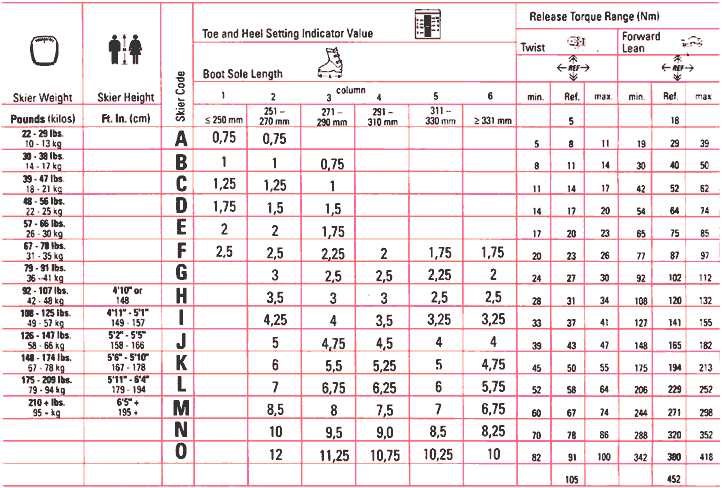
Here is the DIN chart as published by Marker.

All companies use the same chart, although each company publishes its own version. This chart is provided for general interest only and not for adjustment purposes; we urge you to seek professional assistance in mounting, setting and maintaining bindings.
Here is the procedure a Certified Technician will follow to determine binding release setting. Please do not attempt to do this on your own.
Determine skier type:
Use chart to determine setting:
1. Find Release Code (letter A - O) which corresponds to skier weight and find Release Code which corresponds to skier height. If not the same, choose the one closer to the top of the chart. For example if skier weight is 175 lb. (L) and height is 5'7" (K), choose code K as the correct line of chart.
2. Make the adjustments for skier type and age. The selection from Step 1 is for a Type I skier. If the skier is Type II, move down the chart one code. If the skier type is Type III move down the chart two codes. If the skier is age 50 or over, move up the chart one code. Note and record final Release Code letter for the skier.
3.Reading on corrected code line from Step 2, find column with the skier's boot length. Within the box which corresponds to skier's Release Code and boot sole length is a number. This is the DIN setting for toe and heel bindings.